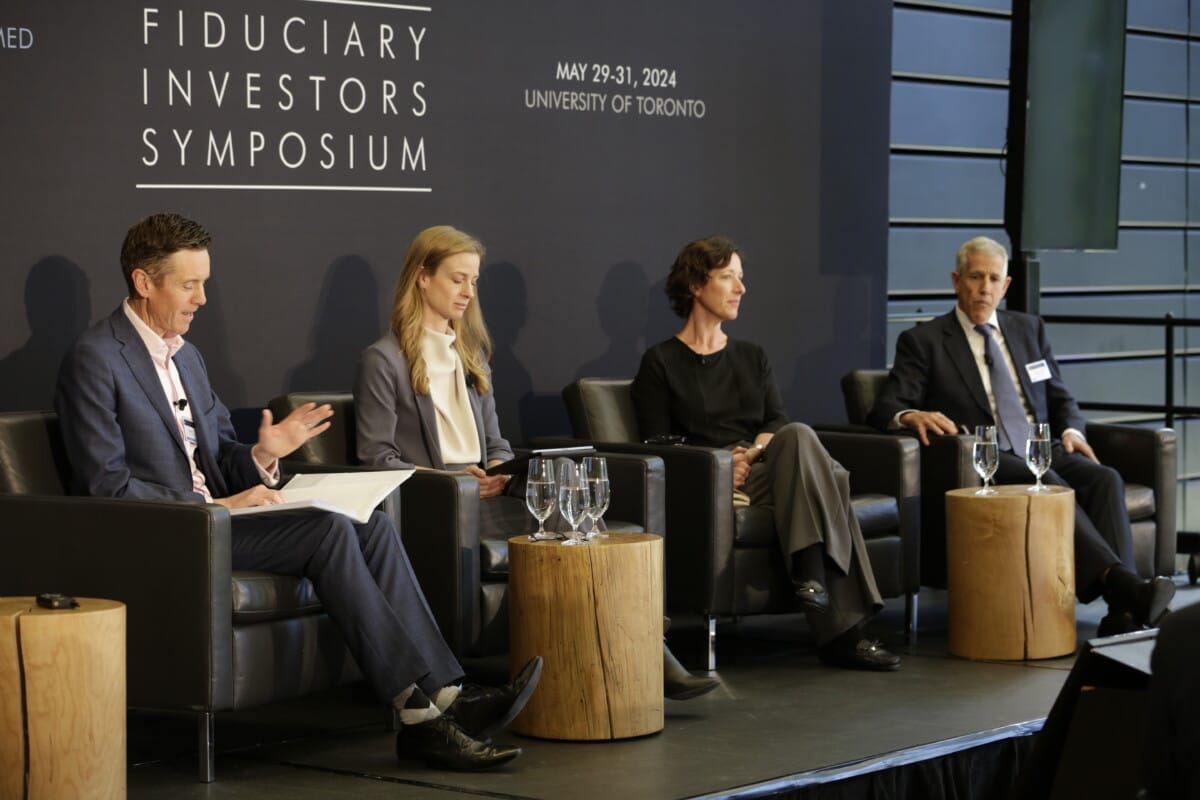The global head of sustainable investing at Canada’s Ontario Teachers’ Pension Plan (OTPP), Anna Murray, said she had finally come to terms with the anti-ESG sentiment that is floating around in certain investment circles.
In the world’s most important capital market, the US, responsible investment has become a politically charged topic. The nation’s market regulator, the Securities and Exchange Commission (SEC), last month stayed the implementation of its climate-related disclosures by public companies in the face of multiple legal challenges from attorneys general of several Republican-led states.
Speaking just across the border at the Fiduciary Investors Symposium held at the University of Toronto this week, Murray conceded that she has spent the last number of years feeling “defensive” against the anti-ESG sentiment, but now, she “very much welcomes it”.
“I think it’s a blessing in disguise, in that it’s made all of us very focused on removing the labels and [recognising] what we’re really talking about [around sustainability] as a set of growing and material risks that is just fundamental to our fiduciary duty,” she told the symposium.
“One of the challenges I think that we are experiencing – if I could call us collectively as an industry – is around emissions intensity, and the absolute focus on that as the sole measure of progress.
“While it’s a very important measure, of course, I think we can all recognize that perhaps it’s an imperfect measure, it is backward looking.
“[I am] hoping to see the discussion starts to evolve more to include the ability to identify and capture these investment opportunities, as opposed to just focusing on the emissions portfolio reduction.”
It is a sentiment echoed by Hendrik du Toit, founder and chief executive of international asset manager Ninety One, who said that ESG considerations have become an integral part of modern investing.
“[The ESG team] are not the people in the corner next to the compliance team. They’re actually embedded in the investment teams, and they are in the leaderships of the firm,” du Toit said.
Despite all the negative narratives around ESG, du Toit said the area is still witnessing an unprecedented level of international collaboration.
“It’s very significant that the US government and the Chinese government, which don’t really talk a lot, have their climate channel absolutely open… which is not often publicized,” he said.
“There are things happening that we should celebrate as well.”
However, not one to mince words, du Toit said the asset management industry has done “a pretty abysmal” job in quantifying the transition risk, and it’s disappointing to see the world’s inability to even mobilise 1 per cent of its capital per annum to finance the transition.
“We as an industry are collectively incredibly stupid sometimes,” he said. “We had a decade or five years of literally free money – what did we do with that? We threw it at tech we don’t really need to use.
“What can we do as asset managers, besides pricing securities, is we can actually mobilise capital to invest behind the most important investment opportunity of our generation.
“All we try to do is encourage the companies we invest in to maximise their value by recognising the transition risk – ie developing real world plans to protect the equity value, and contribute to a world which is livable. It’s really as simple as that.”

With C$750 billion in assets under management, BNP Paribas Asset Management has committed 50 per cent of them to 10 net zero objectives, spanning across equity and credit corporate investments and some private assets.
The firm’s global head of sustainability Jane Ambachtsheer said the anti-ESG move is evidence of impact.
“A lot of the pushback we’re seeing today in the market is actually… because we’re pushing in uncomfortable places,” she said.
“I think a lot of people are waiting for rates to come down and then we’ll see clean energy investment deployment pick up and become more attractive.”
While pension and sovereign funds have positioned themselves well in private markets to harvest clean energy opportunities, Ambachtsheer said “the big question will be on the public [market] side”. And the performance there hasn’t really been glowing, as the S&P Clean Energy index was down 15.63 per cent on an annualised total return basis in the past three years.
“A lot of people are looking at that and pointing to that as a proof point that sustainable investing has had its run the last three or four years, and now we’re moving on to something else,” Ambachtsheer said.
“That’s not our perspective. Investing in clean technology and renewables is one piece of an overall broad diversified approach to thinking about the transition, and looking for the right kind of pricing and opportunities is an important element of that.
“On the stewardship side, we voted against 1000 management resolutions last year because we weren’t happy with what the companies were reporting on climate.
“So there are certain things that you can just measure year over year and report on, and I think understanding what investors want to achieve around net zero and helping them align with that is really a big part of our commitment.”
